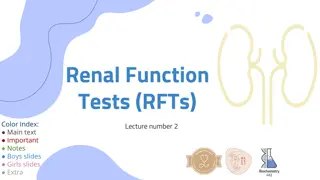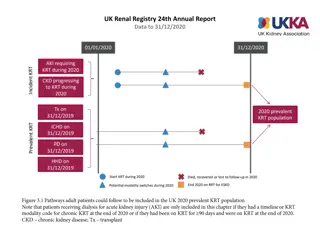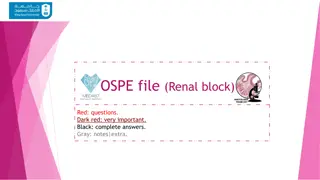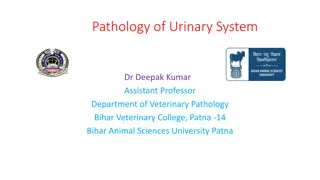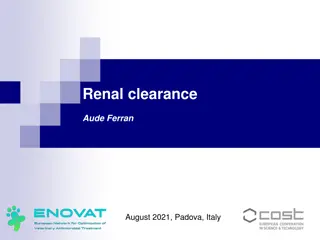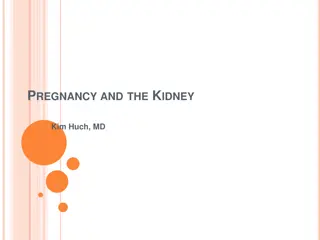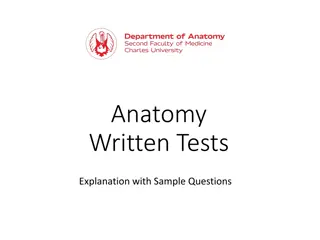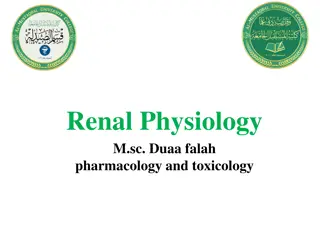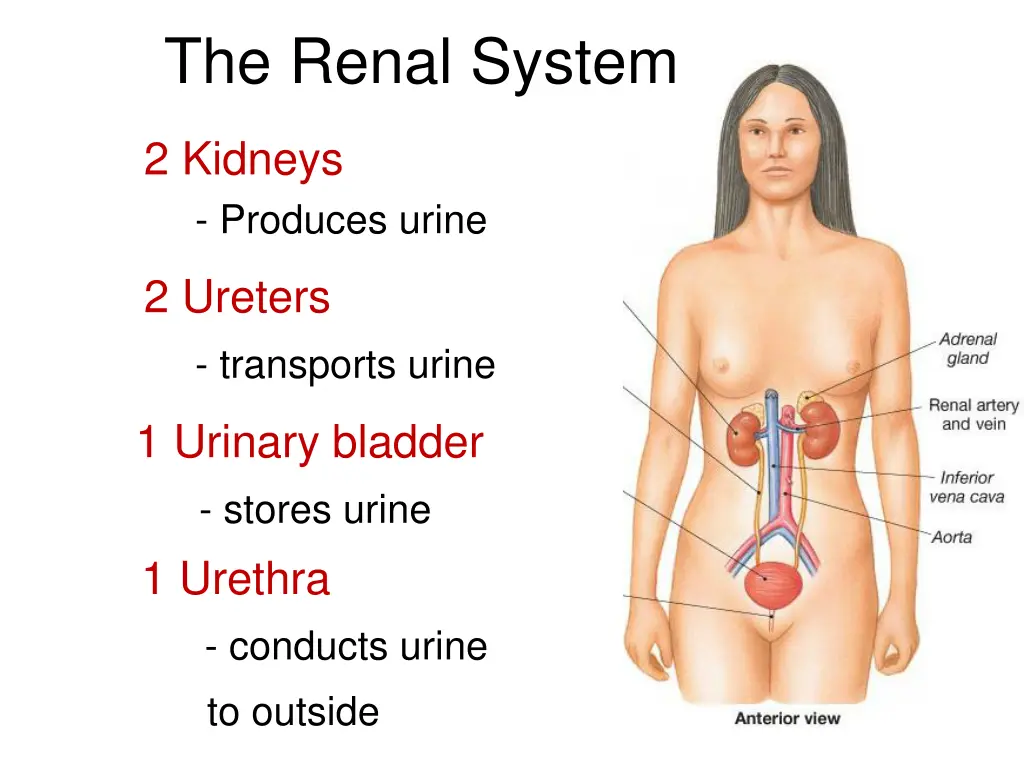
Understanding the Renal System and Nephron Anatomy
Explore the intricate structures of the renal system, including the kidneys, ureters, bladder, and urethra. Delve into the layers surrounding the kidneys, the collection of urine in the renal system, and the functionality of the nephron, the kidney's functional unit. Learn about the juxtaglomerular apparatus and the different types of nephrons present. Discover the crucial components like the glomerulus and the renal tubule, essential for urine production and waste filtration.
Download Presentation

Please find below an Image/Link to download the presentation.
The content on the website is provided AS IS for your information and personal use only. It may not be sold, licensed, or shared on other websites without obtaining consent from the author. If you encounter any issues during the download, it is possible that the publisher has removed the file from their server.
You are allowed to download the files provided on this website for personal or commercial use, subject to the condition that they are used lawfully. All files are the property of their respective owners.
The content on the website is provided AS IS for your information and personal use only. It may not be sold, licensed, or shared on other websites without obtaining consent from the author.
E N D
Presentation Transcript
The Renal System 2 Kidneys - Produces urine 2 Ureters - transports urine 1 Urinary bladder - stores urine 1 Urethra - conducts urine to outside
3 Layers Surrounding the Kidney Renal Capsule - inner layer (outer surface of kidney) Adipose Capsule - fat padding around kidney Renal Fascia - outermost layer
Outer renal cortex Inner renal medulla Renal pyramid Renal columns Renal papilla Minor calyx Major calyx Renal pelvis Ureter
Collection of Urine in the Renal Systems Calyx cup Pelvis = basin Calyx - singular Calicies - plural to Bladder
The Nephron Functional Unit 1.25 million/kidney
The Nephron has 2 parts: 1. Renal Corpuscle a) Glomerulus b) Bowman s Space c) Bowman s Capsule 2. Renal Tubule a) Proximal convoluted tubule (PCT) b) Loop of Henle (nephron loop) c) Distal convoluted tubule (DCT)
Juxtaglomerular Apparatus Macula Densa specialized portion of DCT. Sits in between afferent and efferent arteriole for communication regarding renal function. Juxtaglomerular (JG) Cells specialized cells, mostly surrounding afferent arteriole. For changing diameter of afferent arteriole.
~85% Cortical Nephrons Short loop of Henle. Efferent arteriole becomes peritubular capillaries. 15% Juxtamedullary Closer to medulla. Loop of Henle deeper. Efferent arteriole becomes vasa recta.
Renal a. Renal Blood Supply Segmental a. Interlobar a. Arcuate a. Cortical radiate a. Afferent arteriole
Blood arrives at afferent arteriole. Filtrate is filtered at Glomerulus. (a fenestrated capillary bed) Blood departs via efferent arteriole. a) Peritubular or b) Vasa recta capillaries (cortical nephrons) capillaries (juxtamedullary nephrons) Veunles
Venules Interlobular v. Arcuate v. Interlobar v. Renal v.
Nephrons with: a)peritubular capillaries (cortical) b) vasa recta (juxtamedullary)
The Renal Tubules a) Proximal Convoluted Tubule Actively reabsorbs most of filtrate Nutrients (glucose, amino acids) Ions (Na+, Ca2+, etc.) Simple cuboidal epi With microvilli (brush border) = large surface area
b) Loop of Henle Descending and Ascending limb For Water balance Thin segment - simple squamous epi. Thick segment - simple cuboidal epi (no microvilli)
c) Distal Convoluted Tubule Actively secretes ions and other materials Lined with simple cuboidal epi.
- simple cuboidal epi. Collecting Duct Changes to simple columnar epithelium deeper in medulla. AntiDiuretic Hormone (ADH) acts here to conserves H2O
There are 4 Processes in the kidneys: 1. Filtration: at Glomerulus net movement of substances from glomerulus to Bowman s space. 2. Resabsorption: net movement of substances from renal tubules and collecting duct into peritubular & vasa recta capillaries. 3. Secretion: net movement of substances from peritubular & vasa recta capillaries into renal tubules. 4. Excretion: elimination of urine from body.



